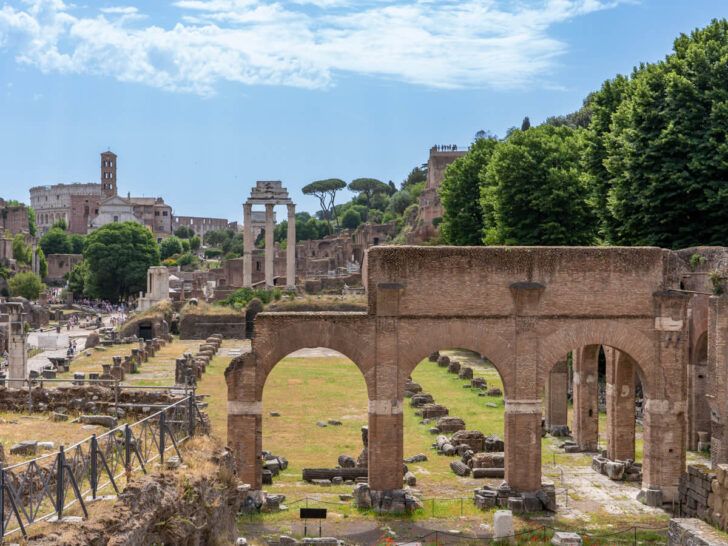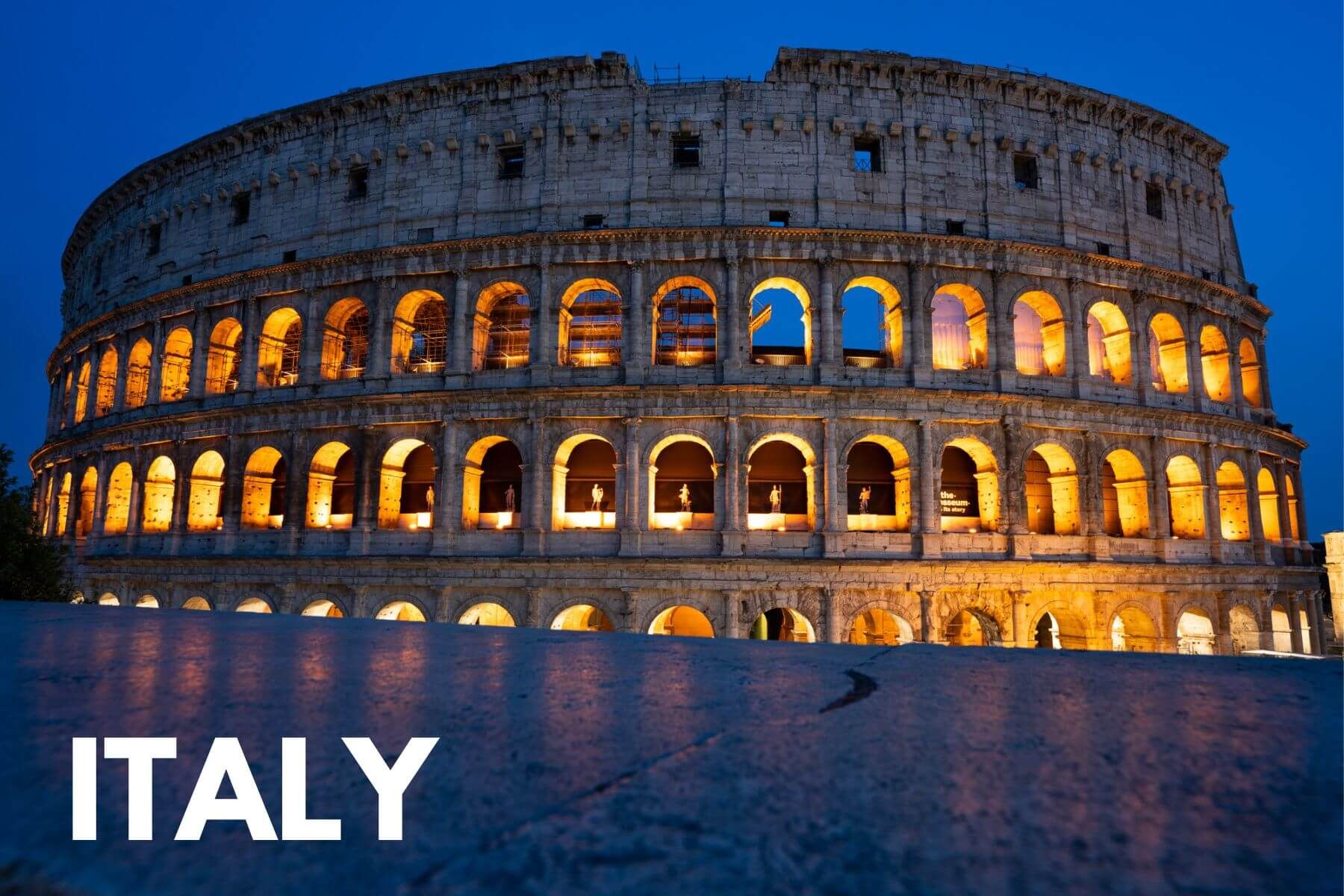Benvenuto in Italy! It might be difficult choosing where to travel in Italy because there are so many great options! Italy is a popular destination for tourists because it’s known for beautiful architecture, ancient ruins, world-famous cities, dramatic coastlines and excellent wines.
Even though we’ve traveled through Italy multiple times, we can’t wait to plan another trip every time we leave. Between the food, culture, history and people, Italy is a place that will always have you wanting more.
- Capital City: Rome
- Population: About 59 million
- Language: Italian
- Currency: Euro ($1 USD = 0.92 EUR)
- Time Zone: Central European Time (UTC +1) and Central European Summer Time (UTC +2)
Top Places To Visit In Italy
Amalfi Coast – One of the world’s most famous road trip routes, the Amalfi Coast features numerous pastel-hued seaside towns nestled within a beautiful stretch of the Italian coastline. If you’re looking for incredible views, glamour and picturesque alleyways, the Amalfi Coast is for you.
Cinque Terre – Made up of five quaint villages (Monterosso, Vernazza, Corniglia, Manorola, and Riomaggiore) on Italy’s Ligurian coast, the entire region is a national park and UNESCO World Heritage Site. You can hike between all 5 villages or take the train to enjoy the incredible views.
Dolomites – Located in northeastern Italy, the Dolomites are a popular mountain destination for those who love adventure. Summer and early autumn provide ample opportunities for hiking, mountain biking, climbing via ferrata, base jumping and hang gliding.
Lake Como – One of the most popular destinations in Italy known for its charming lakeside villages, historic villas and stunning views, Lake Como is a popular spot for those wanting to enjoy a relaxing vacation. It’s truly one of those places you need to see to believe.
Milan – This cosmopolitan Europen city is sometimes overlooked by the likes of Rome, Florence and Venice, but Milan offers stunning cathedrals, world-class museums and culture. It’s the fashion capital of the world so fashionistas this is one city you need to add to your itinerary.
Naples – On the southeast coast of Italy, Naples is an authentic Italian city and home of the Margarita pizza. The city itself can be a bit gritty, but the historic center is a UNESCO World Heritage Site with the famous archeological sites of Pompeii and Herculaneum nearby.
Rome – The Eternal City is filled with history and you can barely turn a corner without stumbling upon an ancient ruin or a Renaissance masterpiece. Top attractions include the Colosseum, Trevi Foundation, Pantheon, and the Vatican Museums (located in Vatican City).
Sicily – Home to the largest volcano in Europe Mount Etna, Sicily is popular for it’s heavenly sandy beaches, delicious wines and ancient ruins. You could easily spend a few weeks in this beautiful region, but if you’ve already been to Sicily, you could visit the other larger island of Sardinia.
Tuscany – From the rolling hills, picturesque views and charming villages, Tuscany is one of the most sought after travel destinations in Italy. It’s perfect for those looking for a slow paced romantic getaway. Food and wine are a highlight of Tuscany and we recommend you begin with the cities of Florence and Sienna.
Venice – Originally a powerful Republic, Venice is now a protected UNESCO World Heritage Site built on 18 small islands connected by numerous bridges and canals. It offers incredible architecture and romantic canals, but it’s extremely busy in the peak season of summer.
Rome
As Italy’s capital city, we always recommend visitors add Rome to their itinerary. It’s a special place filled with history, art, fountains and architecture unlike anywhere else in the world. Explore our guides below to see the top experiences.

Is The Go City Rome Explorer Pass Worth It?
Most Popular Tours In Italy
How Many Days Do You Need In Italy?
If this is your first trip to Italy, we recommend 10-14 days. This way you have time to explore Rome, Florence, Venice and maybe Milan as well as taking a side trip to the Amalfi Coast, Cinque Terre or the beautiful countryside of Tuscany. Plan to spend 2-3 days in each city with no more than 4 to 5 stops.
For longer trips to Italy, we’d recommend 2-4 weeks. You won’t be able to see everything, but you’ll have time to explore one of the islands including Sicily or Sardinia. If you want to be adventurous, head to the Dolomites for epic trails and to see the stunning scenery for yourself.
Best Time To Visit
Italy’s best weather is between April and October, so if you want warm sunny days you should plan to visit in peak season. Just remember, summer draws the biggest crowds and highest hotel costs in most of these popular Italian destinations.
We’ve been to Italy in all four seasons, and we think the shoulder season months of April, May, September and October are the best times of year to visit. You’ll benefit from a nice balance between costs, crowds and weather in the shoulder seasons.
Note: This page contains affiliate links. When you make a purchase using one of these affiliate links, we may earn a small commission at no extra cost to you.

